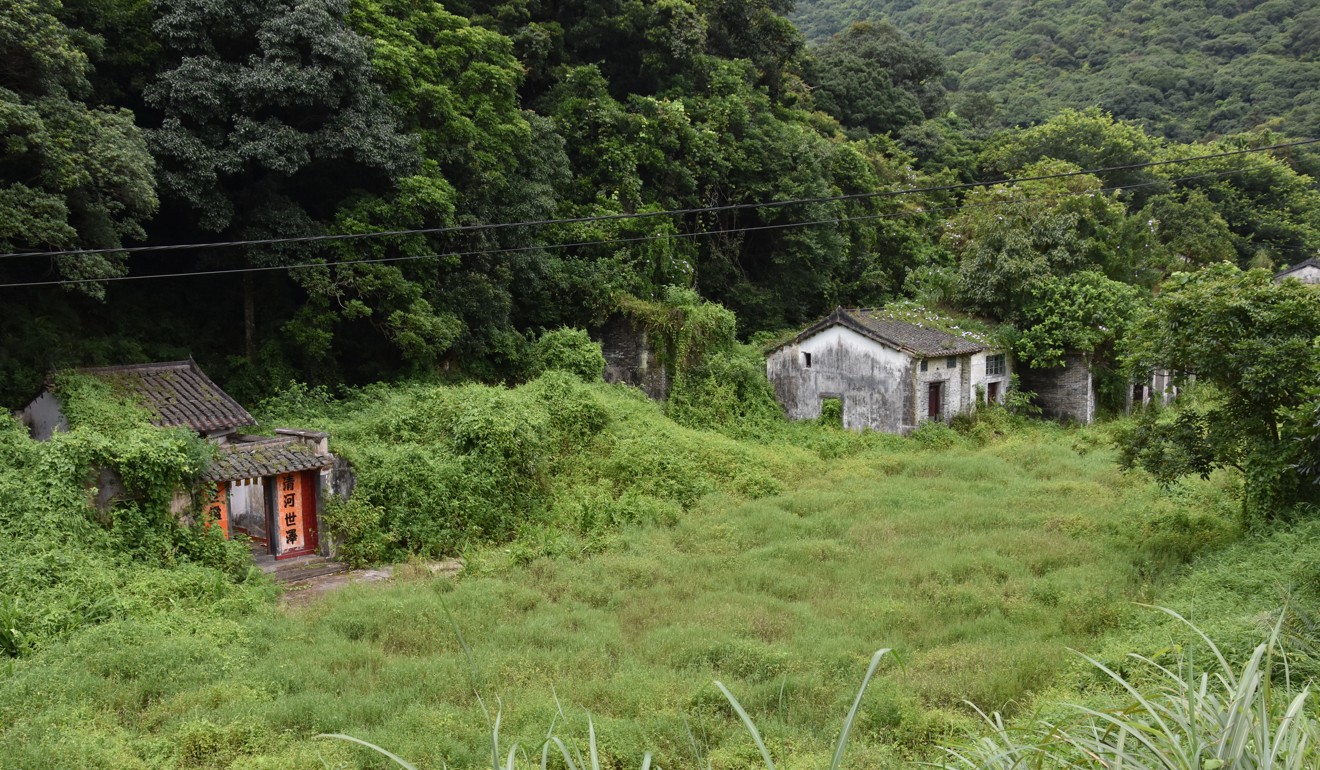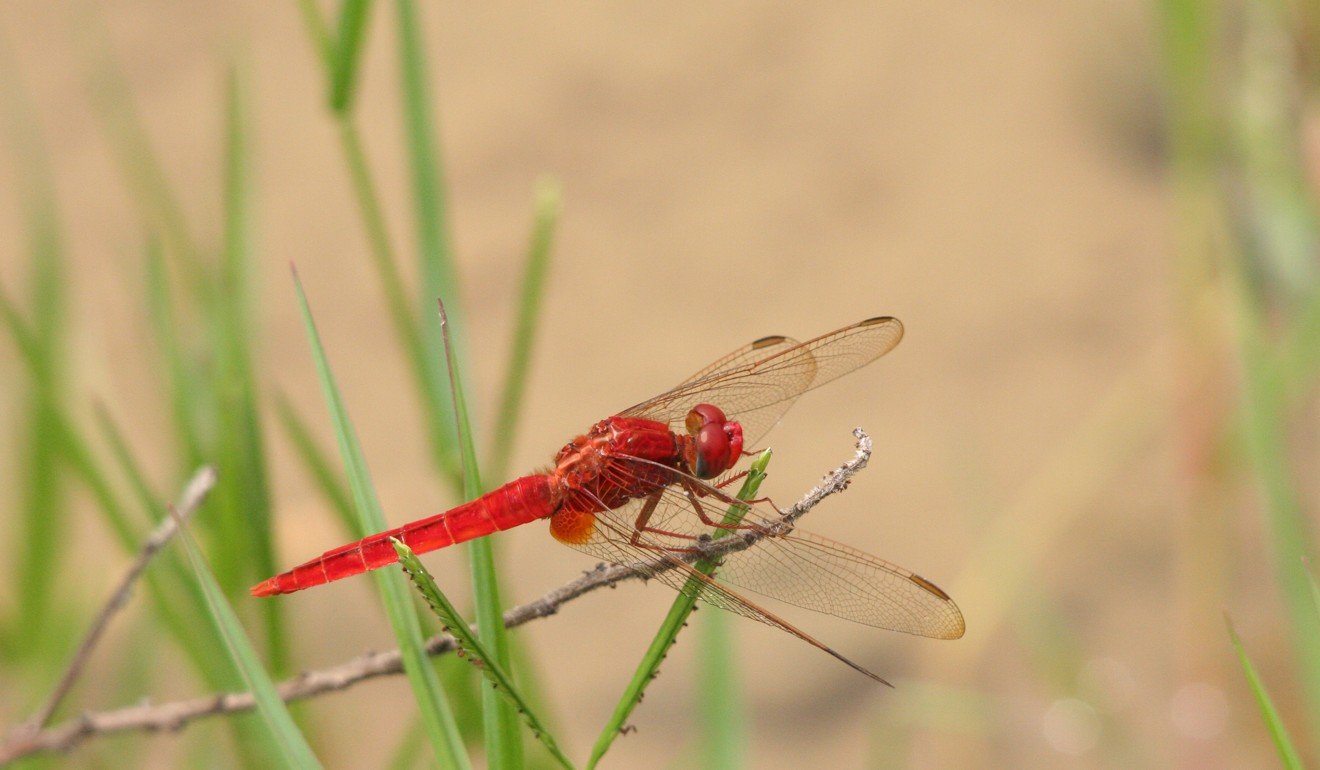
The Romer’s tree frog: green group and scientists thrilled by endangered amphibian’s surprise appearance in Tai Po wetlands survey
- Once feared extinct, frog found only in Hong Kong is now breeding in more areas
- Sha Lo Tung wetlands have shrunk, but ongoing survey records numerous animals
An endangered frog native to Hong Kong has been spotted in an ecologically rich wetland region in rural Tai Po, in the New Territories, for the first time by a local green group.
“The Romer’s tree frog is a precious species only found in Hong Kong, so this is an encouraging find,” said Elaine Yuen Yan-ling, assistant education and conservation manager of local non-profit Green Power.
Scientists who have been tracking the tiny frog since the 1950s, and feared at one time that it was extinct, are excited to learn it is breeding in more areas today.
The group first spotted the rare amphibian while doing an ecological survey in Sha Lo Tung in June last year, as part of a management agreement with the government. The survey began in April last year and will continue for two years.
Presenting the preliminary findings of the survey on October 31, Green Power said it had so far found 128 butterflies, 56 dragonflies, 36 amphibians and reptiles, 13 freshwater fish, 11 mammals and 151 plants.
Aside from the Romer’s tree frog, it also spotted several rare animals including the crab-eating mongoose and Ryukyu Dusk-hawker dragonfly.

Green Power got involved after a land swap deal by the government was approved in 2017 to preserve the ecologically sensitive area.
Sha Lo Tung was listed in 2004 as one of 12 priority sites to be protected under a new nature policy to regulate and conserve Hong Kong’s important natural resources.
Initially, the site was mostly private-owned and earmarked to be developed into a golf course, until the government proposed a land swap deal with the developer in 2017. The developer received a restored landfill site in Shuen Wan for its golf course, while the Sha Lo Tung area was put under a management agreement between Green Power and the Agriculture, Fisheries and Conservation Department for rehabilitation.
Landmark Hong Kong land swap deal is a win for environmental conservation
The Romer’s tree frog, which grows to a maximum length of just 2.5cm, was first discovered on Lamma Island in the 1950s but was declared extinct when the cave system where it was found collapsed.
It was not until the 1980s when the frog was spotted again on Lamma, Lantau and Chek Lap Kok islands. When Chek Lap Kok was chosen as the site of Hong Kong’s airport, the frogs there were relocated.
Stable populations are now thriving in several areas, including in Lau Shui Heung in the Pat Sin Leng Country Park, Kadoorie Farm and Botanic Garden, Tai Po Kau Nature Reserve, Tai Lam Country Park, Ma On Shan Country Park, Lung Fu Shan Country Park and Tai Tam Country Park.
It is currently listed as endangered on the International Union for Conservation of Nature’s Red List of Threatened Species, an inventory of the global conservation status of animals and plants. Hong Kong has also made it a protected wild animal.
Fears for wildlife as villagers strip land in rural enclave for ‘organic farm’
“This is really good news, it means the distribution of the frogs is widening,” said Michael Lau Wai-neng, chairman of the Hong Kong Wetlands Conservation Association and one of the scientists who rediscovered the frog in the 1980s.
He said it was unlikely the frogs had always been in Sha Lo Tung. “They probably moved there from Lau Shui Heung, the closest relocation site,” he said.
However, Green Power also raised concerns about the deterioration of the wetlands in Sha Lo Tung.
Groups of off-roaders in four-wheel drives were caught by Green Power’s camera traps twice during the survey. Vandalism by villagers who wanted to build houses on the site in 2016 caused the area to dry up, leading to loss of habitat for some species.
“Compared to 10 years ago, the wetlands have shrunk by 80 per cent,” Yuen said.

She gave the example of the crimson darter, a red dragonfly usually found near bodies of still water.
“In the 17 months of our survey, we have yet to find any of these dragonflies, even in areas where they have been spotted before,” she said. “It is very strange, considering how there are stable populations of rare species, yet this common one is nowhere to be seen.”
To restore some of the habitats, Green Power has started building an eco-pond and artificial marshes, and will work with villagers to reintroduce agriculture to prevent the entry of invasive species.
“We hope this will increase the biodiversity of the area and restore Sha Lo Tung to some of its former condition,” Yuen said.

